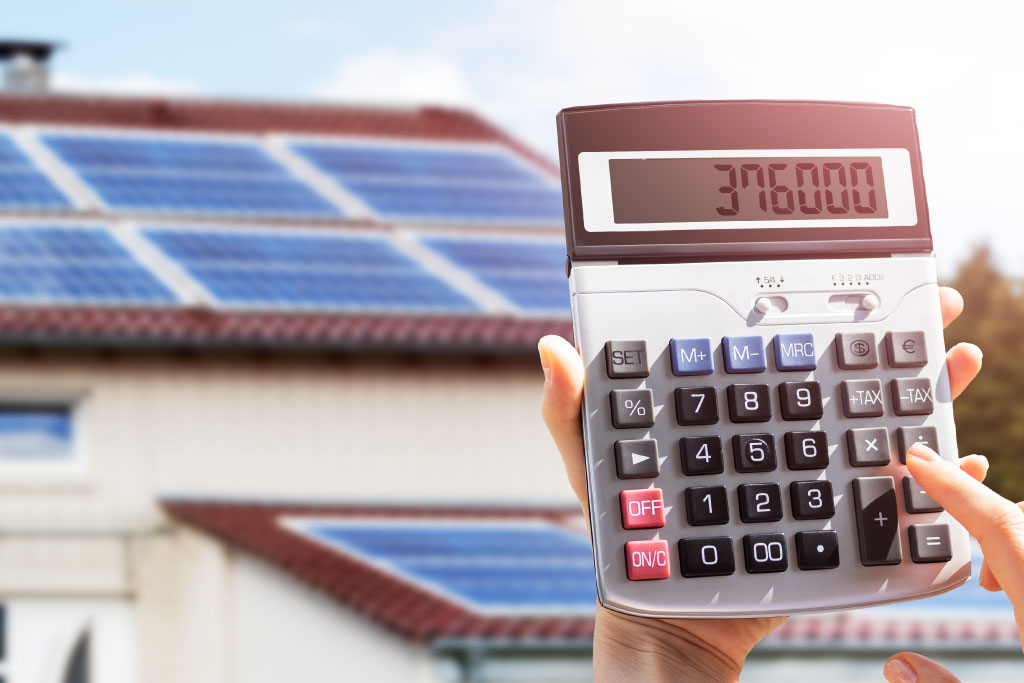There’s a lot going on in the solar industry. Two months ago, we discussed how tariffs are kind of encouraging the solar industry to onshore manufacturing. However, new economic policies are shaking up the entire industry, and many do not have a bright outlook on the future.
In this article, we’ll discuss:
- What the OBBB does to solar tax incentives
- How the OBBB cuts the ITC
- How the OBBB cuts the PTC
- How elevated reviews grind solar projects to a halt
- What’s the short-term and long-term impacts of these changes
However, it is not all gloom and doom! We’ll also explore the silver lining. Such as:
- How solar energy is becoming increasingly cheaper and more efficient
- How other countries like Canada are supporting Solar projects
- How the United States is promoting nuclear energy.
Finally, we’ll discuss how these policies ultimately impact you, the residential solar enthusiast.
The One Big Beautiful Bill (OBBB) Act cuts incentives for solar investment.
On July 4, 2025, the Trump Administration signed the One Big Beautiful Bill (OBBB) Act into law. This is a pretty extensive piece of legislation that covers a lot, from the AI industry to ICE spending. We’re focusing solely on how it affects the solar industry.
One of its biggest impacts is how it cuts the solar Investment Tax Credit (ITC). We’ve talked about the ITC a lot in our past blogs. That’s because it makes residential solar much more affordable.

What is the Solar ITC?
The ITC is a federal tax credit that was part of the Biden administration’s 2022 Inflation Reduction Act (IRA). It incentivizes solar investment by reducing the taxes you owe. If you install solar, you will receive a tax credit for 30% of the net cost of installation.
Let’s take a look at that with numbers so you can understand the full impact. Let’s say the net cost for your residential solar system is $30,000. Tax season rolls around, and you owe $15,000. You apply your solar tax credit of $9,000 (30,000 x 0.3), reducing the amount you owe to $6,000. If you owe less than your tax credit, you can roll it over for up to five years.
Ever since the IRA passed, nationwide solar deployment has surged across all segments. In 2023, the U.S. installed 6.9 GWdc of residential solar energy, the highest amount ever! In this context, GWdc stands for “Gigawatt of direct current.” Remember, one gigawatt is equivalent to one billion watts.
The IRA and its ITC have only been around for a little over two years. However, it has led to over 11 GWdc of residential solar installations. That’s about 20% of the national solar market.
What is the Production Tax Credit (PTC)?
What we haven’t discussed is the Production Tax Credit (PTC), as it is more relevant for utility-scale solar projects. The ITC is a one-time tax credit. The PTC is a federal tax credit for electricity generated by a renewable energy project for its first ten years of operation. The base rate for solar generation is 2.6 cents per kWh (or 0.026 $/kWh). So, residential home systems don’t really benefit, but for large-scale projects, it adds up.
The PTC prompted a huge surge in utility-scale solar production, just like how the ITC encouraged residential solar adoption. In 2023, the industry added 37 GW of utility-scale solar power to the United States’ grid. 2024 was the biggest year for solar energy, adding 50 GW!
Originally, the ITC and PTC were supposed to gradually phase out by 2035. So if you install solar in 2033, you would only get 26%, then 22% in 2034. The OBBB is now accelerating the phase-out to 2028.
Elevated Reviews by the Office of the Secretary Grinds Solar Projects to a Halt.
In addition to cutting incentives, the Trump Administration has added bureaucratic hurdles. Any solar projects pursuing leases, grants, consultations, biological opinions, or anything like that are now subject to an “elevated review” by the Department of the Interior (DOI).
All construction projects need to interact with the government’s bureaucracy to progress. But that’s usually localized to their region. Now, if you want to build a solar farm anywhere in the United States, you need approval from one of the highest offices of the land.
“Can you imagine if Secretary Burgum ran his billion-dollar tech company like this—reviewing every single IT ticket himself? That kind of micromanagement would paralyze any operation, and here it’s being used deliberately to snuff out renewable energy development.”
~ Kabir Green, Director of Federal Affairs for Nature at the Natural Resources Defense Council, explains in an article for PV Magazine.

What are the Immediate Impacts of these new policies?
In short, American solar developers are rushing to complete projects and bring them into service by December 31, 2028. They are also focusing on projects already nearing completion to avoid bureaucratic roadblocks.
It’s kind of like if you sat down for dinner in a restaurant that you thought closed at midnight. But suddenly the new manager says, “Actually, we’re closing in 30 minutes!” The cooks wouldn’t bother with new orders; they would just focus on finishing what they could. Surely, you would probably leave since there’s not enough time to order and enjoy your food.
On a macroeconomic scale, these cuts will shrink the green energy industry. A report from Bloomberg New Energy Finance (BNEF) predicts that US Clean-energy installations will drop by 41% after 2027. Many solar developers and installers are preemptively laying off their staff in preparation.
“This bill doesn’t just eliminate clean energy tax credits prematurely—it will kill thousands of jobs, crush small businesses, and make home energy more expensive for millions of Americans.”
~ Emily Walker, Director of Insights at EnergySage, explains in an article from PV Magazine.
What about the long-term impacts?
According to the U.S. Energy Information Administration, renewable energy currently accounts for approximately 40% of the nation’s energy. The other 60% belongs to fossil fuels. With the IRA, clean energy was on course to account for 60–80% by 2030. But now, we’re off course, so who knows how much clean energy we’ll have by 2030.
What’s the Silver Lining?
Solar energy is becoming increasingly cheaper and more efficient. On the global stage, solar is still innovating and becoming more affordable. We explore some of these promising innovations in The Future of Residential Solar: Emerging Technologies and Trends.
Levelized cost of electricity (LCOE) is a metric that compares the costs of different forms of electricity generation on a level playing field. Basically, it’s the closest you can get to comparing apples to oranges.
This chart is based on analysis from Lazard, Inc. As you can see, renewable energy is much more affordable than non-renewable energy.
| Power Source | Levelized cost of electricity (LCOE) | Typical Market Range ($/MWh) |
| Coal | $68-166 | On the higher end and rising |
| Natural Gas | $39-101 | Cheaper than coal, but vulnerable to market fluctuations |
| Nuclear | $141-221 | High |
| Utility-scale Solar | $24-96 | Lowest averages |
| Onshore Wind | $24-75 | Lowest averages |
| Solar + Storage | $46-102 | Competitive with gas |
Even without tax incentives, solar remains a great choice for energy production.

Secondly, while the US is becoming less supportive of solar energy, many other countries are promoting its deployment.
The Prime Minister of Canada is pushing an initiative he calls “build, baby, build!” Canada has set an aggressive goal of phasing out fossil fuel power plants over the next three decades. The plan is to replace them with renewable energy power plants.
Canada was also inspired by the success of the ITC and created their own 30% investment tax credit called the Clean Technology Tax Credit. Instead of phasing out, as the original ITC planned, it will remain in effect after 2035 as a 15% tax credit.
In short, Canada is accelerating the development of renewable energy infrastructure nationwide.
Thirdly, the US is investing in nuclear energy.
The Second Trump Administration is scaling up US nuclear capacity. We currently have around 97 gigawatts of nuclear energy capacity. The current administration aims to scale that up to 400 GW by 2050.
Additionally, billion-dollar tech companies such as Amazon, Google, and Oracle are directly investing in nuclear facilities. This is mainly driven by the increasing energy demands of AI data centers. Nonetheless, it’s better that those energy-dense facilities are being powered by nuclear energy instead of fossil fuels.
But what about you? Should you rush to get solar installed on your home before the incentives are gone?
Solar is a big investment, and we believe you should pursue solar energy when you’re ready. We never want to sound alarmist, screaming you should “buy now!”
We always want to be realistic, and realistically, all these cuts change the cost-benefit analysis. In our article, Cost-benefit Analysis of Solar, How to Calculate Your ROI & Payback Period, we discuss just that. However, after 2028, we’ll have to remove the 30% ITC from the equation.
This effectively makes residential solar more expensive in the coming years. However, there are benefits beyond just the financial, just ask any of our past clients.
For example, the Harrison family in Suffolk, Virginia, installed 9.9 kW of solar. That offsets 95% of their energy consumption. That will save them over $55,000 in electricity costs over the next 30 years. However, the Harrisons say having solar gives them “peace of mind.” It makes them feel safe. Read their whole testimonial here.
What we recommend for you right now.
Honestly, we recommend getting a site assessment. We’ll set up an appointment that’s convenient for you at your property. We’ll do a walk-through together, analyzing your electrical consumption and your property’s potential for solar. You’ll have plenty of opportunities to ask all your questions, and we’ll be able to give you personalized answers.
